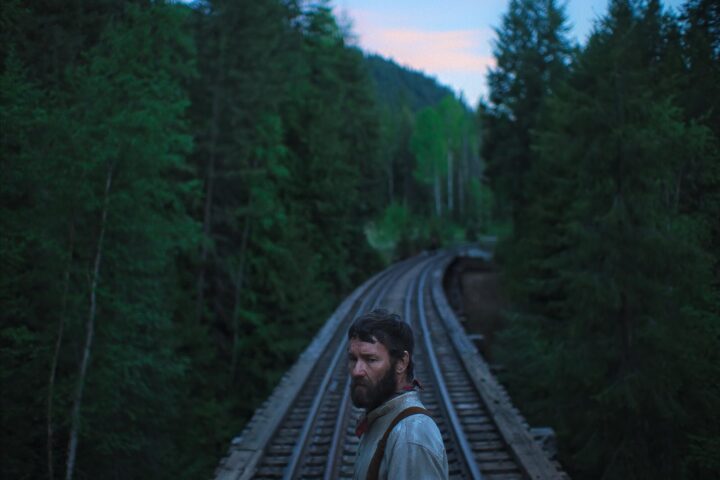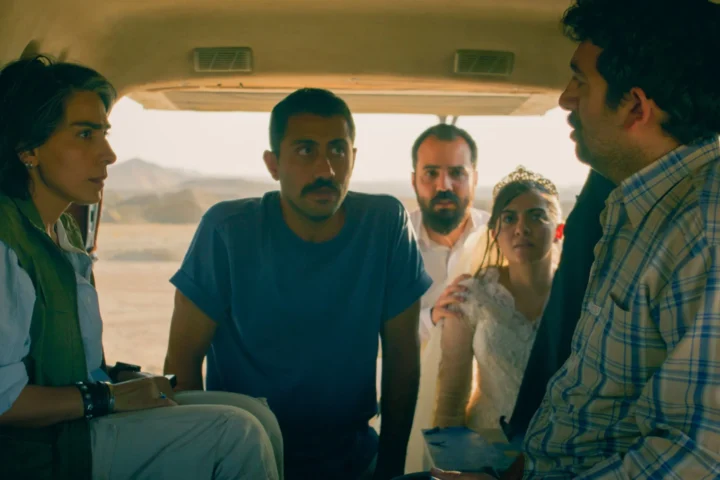No Time to Die is a smashing piece of entertainment, a movie so much fun to watch—extravagant in the usual James Bond ways that provide immeasurable movie comfort—and such a generous swan song for star Daniel Craig that you’d have to be a bitterly pinched cynic to resist. And why would you?
To begin with, on this 25th Bond outing Barbara Broccoli and company had the great sense to hire one of the best new generation directors, Cary Joji Fukanaga, who has mounted a massive production that, clocking in at two hours and forty-three minutes, is expectedly filled with full-throttle set pieces but less expectedly takes the Bond formula and upends it with surprises, substance and genuine pathos.
In his final Bond film, Craig, with his weary, weatherworn handsomeness, taut physicality and emotional dexterity (used to significant effect in Casino Royale and Skyfall as well), delivers a marvelous performance in a movie that gives him latitude across a number of arenas—large-scale derring-do, wryly funny comedy, deeply personal feeling.
Craig has always been a Bond for the 21st Century, a tough guy who largely eschews alpha male swagger; an invested human never dwarfed by the character’s overscaled exploits; a man before an icon. Never a rank sexist, never too suavely playing above the role, able to be wounded and, more importantly, scarred. That vulnerability, in my view, makes him the best Bond in history, or at least the most interesting one.
That said, part of the fun of No Time to Die is in its summation of the Bond milieu, and it plays like a reunion of old friends and a few new ones, and even throws back to Dr. No in its final stretches set on the exotic island lair of its supervillain, played by Rami Malek in an often-recessive, intriguing performance of simmering reserve.
The picture opens with a painful adolescent memory haunting Dr. Madeleine Swan (Lea Seydoux) involving her mother’s murder at the hands of a shadowy assassin at a remote, wintry childhood home. Flash forward to Matera, Italy, where Swan and Bond’s luxurious romantic vacation is abruptly interrupted by an explosive new development in the 30-minute pre-credit sequence, which is as fun as they come, featuring a mad car chase across the medieval town and truly staggering motorcycle stunt. Bond and Swan are in love—but can she be trusted? Emotional baggage from Vesper Lynd’s Casino Royale betrayal still lingers, and Bond cuts Swan loose.
Bond departs Italy for the anonymity of Jamaica where, as you might have guessed, his leisure is decidedly cut short. Enter M (Ralph Fiennes) and CIA op Felix Leiter (a terrific Jeffrey Wright) with a mission involving a stolen and very deadly, virus-based weapon named Heracles, developed for military purposes and able to target an individual’s DNA (or something like that). Wouldn’t you know it—good old SPECTRE is at the theft’s helm, offering Blofled (Christophe Waltz) himself the chance to make a brief appearance, Hannibal Lecter-style, opposite Bond in a terrific prison face off redux.
But the movie’s chief villain is one Lyutsifer Safin (Malek), a supremely intellectual baddie whose pathology is tied to Swan, having been her mother’s executioner after his family was eliminated by Swan’s father. Disfigured and obsessed with poison plants, he saved Madeleine’s life once and now wishes her his partner, kidnapping her and her young daughter and summoning Bond to his garden island of poison plants and bio terrors.
There’s much to savor in a picture that moves from Italy to Jamaia to Norway to the Faroe Islands, and features three terrific female characters that also include a superbly funny, scene-stealing Ana de Armas as Paloma, a three-week green recruit who teams up with Bond in Cuba to track down an elusive Russian scientist. And Lashana Lynch, as a smarty pants new 007 (given the title after M and company incorrectly assume Bond’s demise) named Nomi, has a real way with repartee, gamely sparring with Craig in a handful of clever moments. Seydoux, back for her second Bond outing, has an otherworldly beauty and invitation of such warmth—which she once used to great effect in Blue is the Warmest Color—that you can see why Bond would throw everything over for her; she’s that good.
Old friends return with good grace and humor, including Ben Whishaw’s Q and Naomie Harris as Moneypenny, a prime example of a great actress underutilized in, at least this time out, a stockly written role in the otherwise sharp script by Neal Purvis, Robert Wade and Phoebe Waller-Bridge. Broadway’s Billy Magnussen, a terrific actor with the looks of a movie star who has kept a low-profile even after solid work in pictures like Into the Woods and Game Night, also impresses in a small but key role.
No Time to Die suggests that Bond has changed, grown and become a deeper human, and that the world around him is no longer the same either. It’s a picture less about geopolitical warfare and sharply drawn contrasts between good and evil that might have informed the series of yesterday, and more about the gray areas between the two—a government sanctioned bioweapon put in the hands of a villain will produce the same results, so are their intentions really that different?
Fukunaga, the great talent behind Sin Nombre, Beasts of No Nation and the first season of HBO’s True Detective, delivers a muscular movie that checks those requisites yet is buoyant enough to illuminate Bond’s weary soul in fresh and moving ways. It is a movie that delivers what we have come to expect, or require, of Bond after nearly six decades. But the world-building requirements here are in service of delivering a penultimate series surprise that deftly exploits just how much we have come to care for the man, James Bond, as well as the institution.
Craig’s investment across sixteen years in the role culminates in a worthy final finish that is massive, spectacular and resonant in a single indelible moment.
4 stars.



